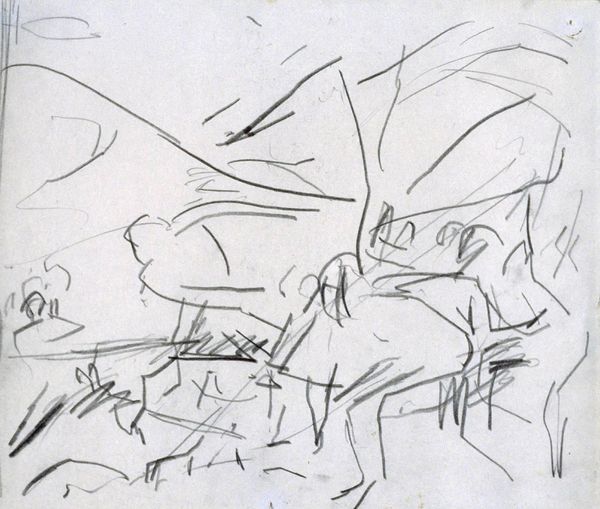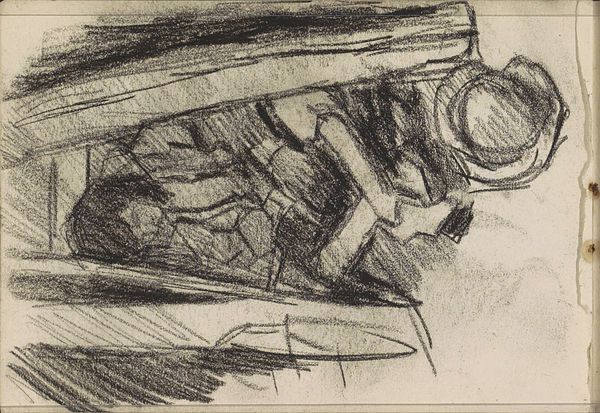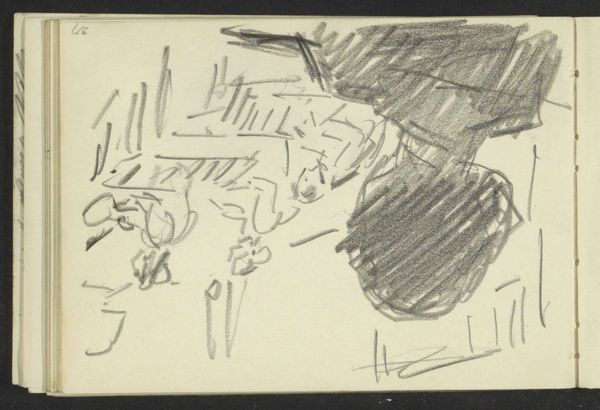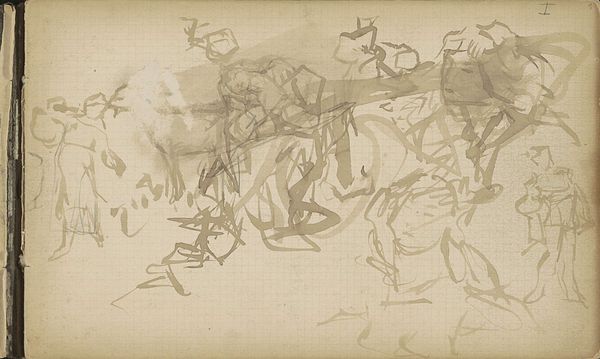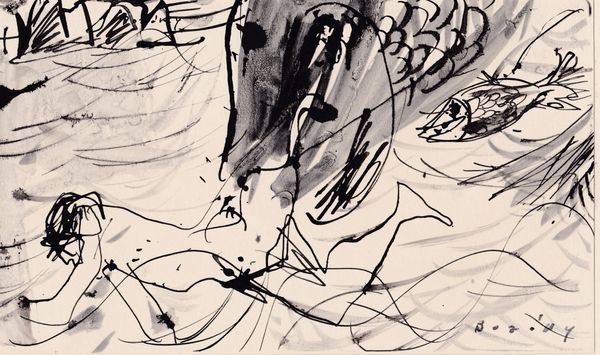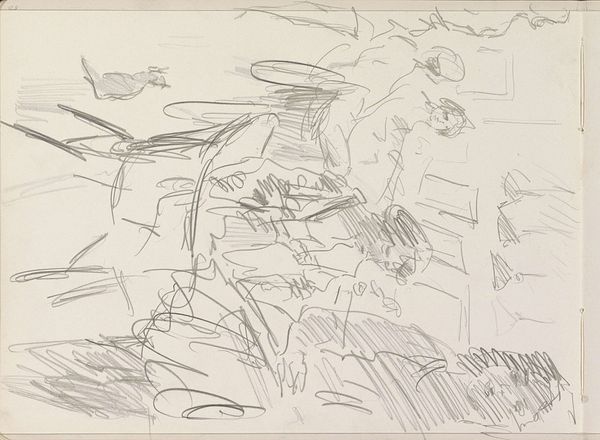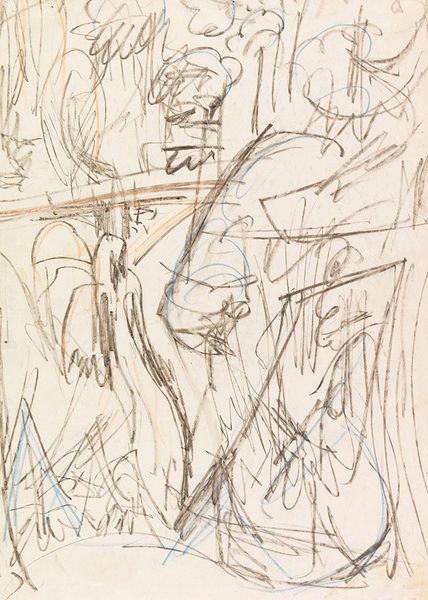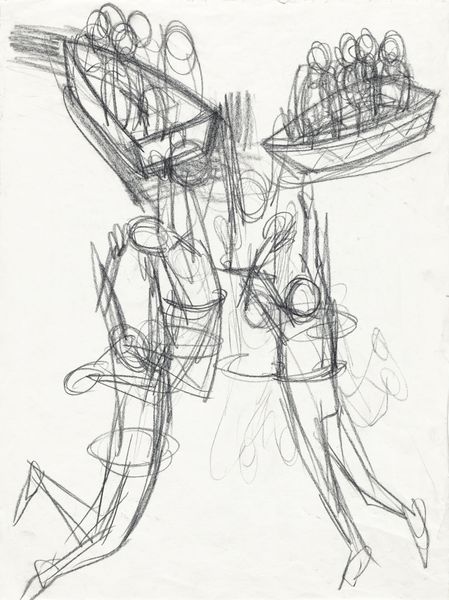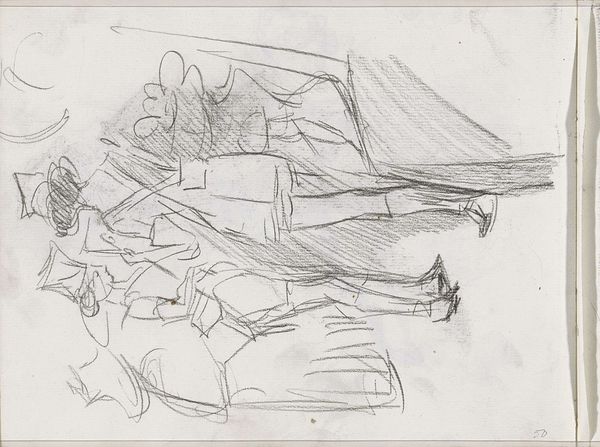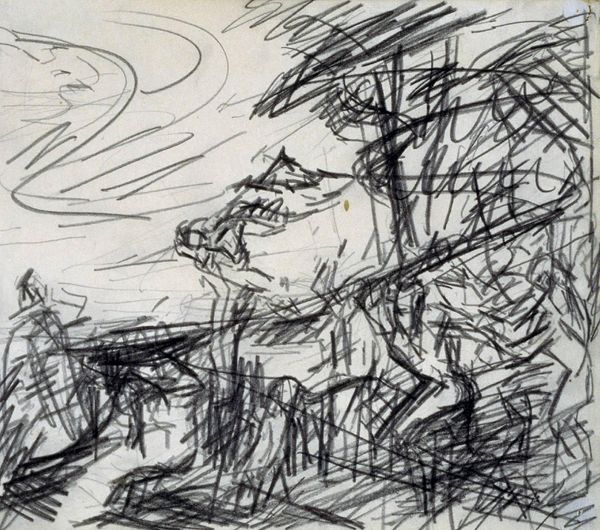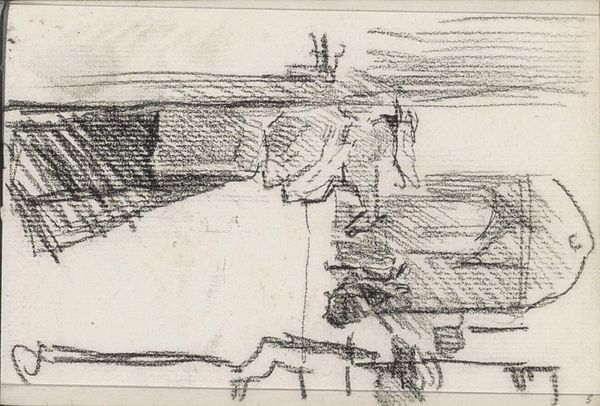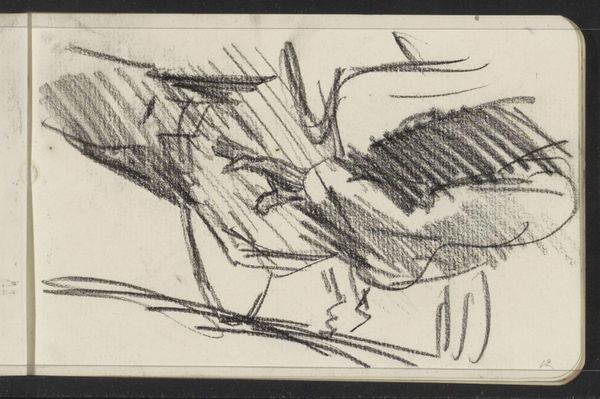
Dimensions: unconfirmed: 299 x 270 mm
Copyright: © Frank Auerbach | CC-BY-NC-ND 4.0 DEED, Photo: Tate
Editor: Here we have Frank Auerbach's sketch of Titian's 'Bacchus and Ariadne'. It's all furious lines, capturing something frenetic. What do you make of this, of Auerbach engaging with Titian in this way? Curator: Auerbach, a Jewish émigré shaped by war, frequently grappled with themes of displacement and memory. This sketch isn't just about Titian; it's about Auerbach wrestling with art history, colonialism, and the very idea of a European artistic canon. How does the sketch's frenetic energy speak to the tension between homage and critique? Editor: That’s a great point, this isn’t mere copying. It feels like an active conversation. I’m going to look at Auerbach’s other works now. Curator: Exactly! It's a powerful reminder that art doesn't exist in a vacuum.
Comments
tate 6 months ago
⋮
http://www.tate.org.uk/art/artworks/auerbach-sketch-from-titians-bacchus-and-ariadne-t07629
Join the conversation
Join millions of artists and users on Artera today and experience the ultimate creative platform.
tate 6 months ago
⋮
From his days as a student at St Martin's School of Art in London (1948-52), Auerbach has spent many hours making drawings and paintings from works in the collection at the National Gallery in order, he remarked, 'to remind myself of what quality is and what's actually demanded of paintings' (Lampert, p.34). In 1995 the National Gallery's exhibition Frank Auerbach and the National Gallery: Working after the Masters demonstrated the importance of drawing to Auerbach's method and the extent to which he used his numerous studies of paintings after Rembrandt, Titian and Rubens to help him compose his own figure studies and landscapes. This group of three sketches (T07628-T07630) made after Titian's Bacchus and Ariadne (1521-3) in the National Gallery was part of a commission from David Wilkie (1921-92). Wilkie had become fascinated with the work of the Italian Renaissance artists following a study of the Vatican's collection in Rome in the mid 1940s. He already collected paintings by Modern British artists, and in 1965 commissioned Auerbach to paint a version of Titian's Tarquin and Lucretia in the Akademie der Bildenden Künst, Vienna (private collection). This resulted in two paintings, Study after Titian I (Tate T06683) and Study after Titian II (Tate T06684). Auerbach drew this sketch in front of the painting in the National Gallery. He uses solid outlines to draw attention to the figures of Ariadne, Bacchus and the man in the foreground with snakes wrapped around his body. The three drawings (T07628-T07630) pick out different aspects of Titian's construction of this picture. Hughes suggests that 'The specifics of the story take second place to an expression of the raw energy and emotion of the Titian, revealed paradoxically through the formal rigour of geometry' (Hughes p.31). The spontaneity of the sketch and bold use of pencil confirms this statement. Auerbach may have used this outline drawing as a preparatory study for his oil painting after Bacchus and Ariadne which he completed in 1971 (Tate T06687). Further reading:Robert Hughes, Frank Auerbach, London 1990Catherine Lampert, Norman Rosenthal and Isabel Carlisle, Frank Auerbach Paintings and Drawings 1954-2001, exhibition catalogue, Royal Academy of Arts, London 2001Colin Wiggins, Frank Auerbach and the National Gallery: Working after the Masters, exhibition catalogue, National Gallery, London 1995 Heather BirchallJanuary 2002
